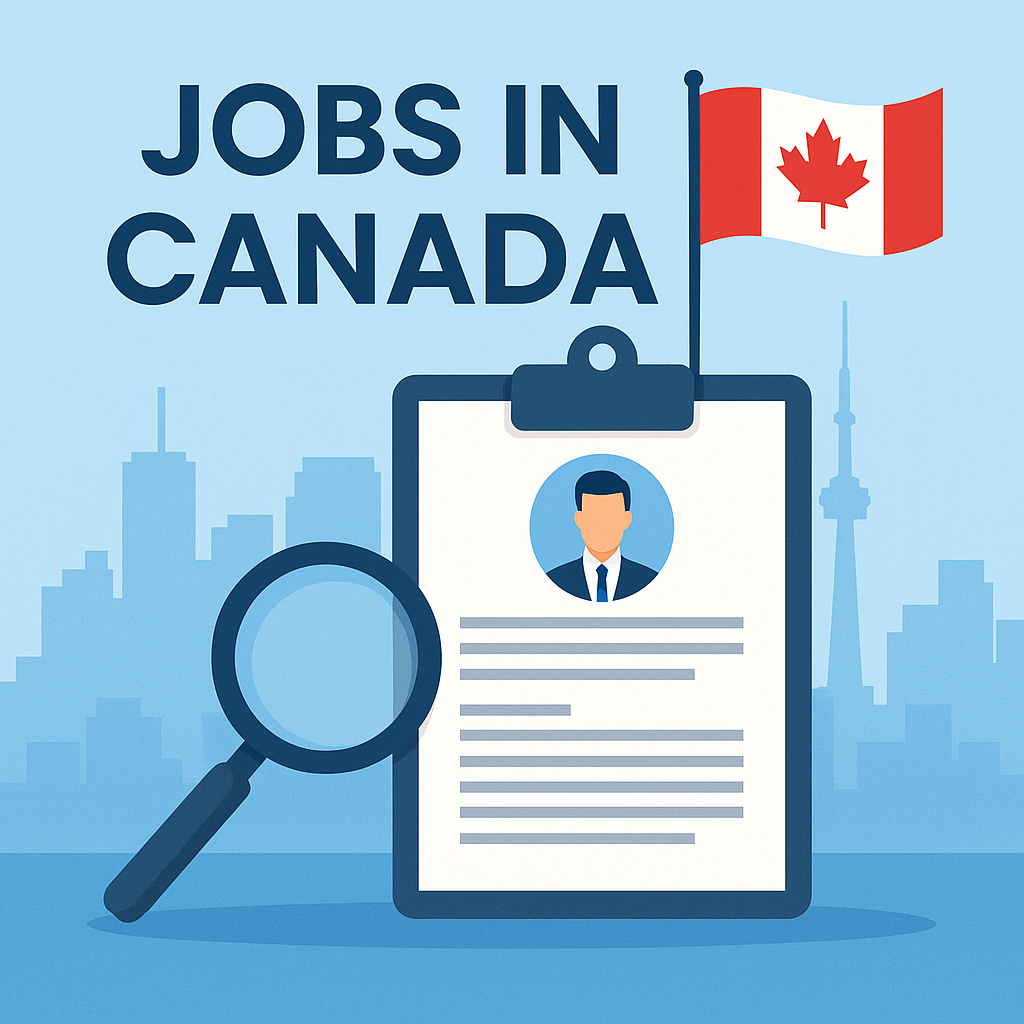Apply
Canada is known for its welcoming stance toward immigrants and offers numerous job opportunities for foreign workers. With an aging population and skill shortages in many industries, international talent is in high demand across the country. This comprehensive guide will walk you through the Canadian job market – from in-demand job sectors and finding jobs in Canada to work permits, visa types, immigration pathways, Canadian résumé tips, and key resources for newcomers.
High-Demand Job Sectors in Canada
Healthcare
Canada’s healthcare sector urgently needs professionals like nurses, doctors, and personal support workers. Aging populations and pandemic pressures have created a strong demand for registered nurses, physicians, medical technicians, and other health workers across all provinces.

Information Technology (IT)
The tech industry in Canada is booming, with high demand for skilled tech workers such as software developers, web developers, data analysts, and IT project managers. Cities like Toronto, Vancouver, Ottawa, and Montreal have vibrant tech scenes.
Construction & Skilled Trades
Construction, engineering, and skilled trades are core sectors facing worker shortages. There’s demand for engineers, electricians, carpenters, plumbers, welders, and heavy equipment operators.
Agriculture
Canada’s farming and agri-food industry relies heavily on seasonal and skilled foreign workers. There are frequent openings for farm laborers, fruit/vegetable pickers, meat processors, and agriculture technicians.
Hospitality & Tourism
The hospitality sector has worker shortages. Roles such as chefs, cooks, servers, hotel front-desk staff, housekeepers, and tour guides are often in demand, especially in tourist regions and big cities.
Trucking & Transportation
Canada has a huge demand for truck drivers (long-haul and local delivery), bus drivers, and heavy vehicle mechanics. Several provinces have programs to bring in qualified foreign truck drivers.

How to Find and Apply for Jobs in Canada
Online Job Portals
Start with popular Canadian job search websites. These include sites such as Job Bank, Indeed, LinkedIn, Monster, and Workopolis.
Company Websites & Direct Contact
Visit the careers section of company websites. You can also contact employers directly to inquire about job openings.
Recruitment Agencies
Some well-known agencies include Robert Half, Randstad, Hays, Michael Page, and Drake International. There are also specialized staffing agencies for IT, healthcare, and trades.
Networking
A significant number of jobs are filled through networking and are never advertised publicly. Build a professional network through LinkedIn, industry groups, and local events.
Apply with a Quality Résumé and Cover Letter
Tailor each application to the specific job. Customize your résumé to highlight relevant skills and experience. Write a fresh cover letter for each job application.
Understanding Canadian Work Permits and Visas
| Work Permit / Term | Description |
|---|---|
| Employer-Specific Work Permit | A permit tied to a specific job and employer. You need a valid job offer and usually an LMIA. |
| Open Work Permit | Allows you to work for almost any employer in Canada. Available in certain situations like spousal sponsorship, post-graduation, etc. |
| Labour Market Impact Assessment (LMIA) | A document an employer may need to hire a foreign worker. It proves there’s a need for a foreign worker and no Canadian is available for the job. |
Canadian Immigration Pathways for Workers
Express Entry
An online, points-based immigration system for skilled workers. Includes Federal Skilled Worker, Canadian Experience Class, and Federal Skilled Trades programs. Job offers and Canadian experience improve your chances.
Provincial Nominee Program (PNP)
Each province has its own program targeting local labor needs. Having a valid job offer or relevant experience in a province increases your chances.
Atlantic Immigration Program (AIP)
An employer-driven program for the Atlantic provinces. Requires a job offer from a designated employer in one of the Atlantic provinces.
Other Pathways
Includes Rural and Northern Immigration Pilot (RNIP), Agri-Food Pilot, caregiver pathways, and family sponsorship.
Canadian Résumé and CV Tips
- Résumés are typically 1–2 pages long and use a clean layout.
- Do not include a photograph or personal details such as age, marital status, or national ID numbers.
- Use Canadian English spelling.
- Highlight accomplishments and use action verbs.
- List international credentials and their Canadian equivalency.
- Include a tailored cover letter with each job application.
Resources for Newcomers
Settlement Agencies
Organizations across Canada offer job search help, language classes, and career counseling.
Bridging Programs
Help internationally trained professionals get licensed or certified in Canada.
Mentorship Programs
Match newcomers with professionals in their field to provide guidance and networking opportunities.
Government Programs
Various programs like internships, language instruction, and start-up support are available to help you integrate.
Conclusion
Canada offers a wealth of opportunities for international job seekers. With persistence, proper preparation, and use of the resources outlined above, you can successfully build a career in Canada. Start your journey today and make your Canadian dream a reality!



